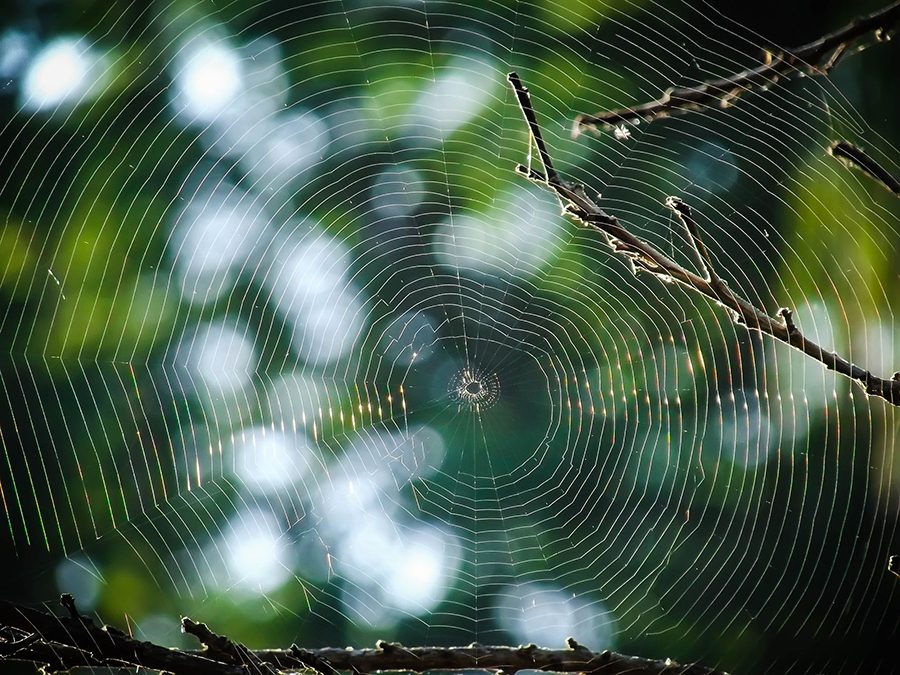Spiders are some of the most feared creatures around. They can be creepy, annoying, and leave behind unsightly webs. If you have discovered more spiders than usual on your property, Abra Kadabra Environmental Services is here to help. We are a family owned pest removal company that can help you keep your home and your family safe from common pests.
When dealing with spiders, it’s useful if you can accurately identify the species. Spiders can be a little complicated. There are several different species native to Minnesota, and it can be difficult to tell them apart if you aren’t familiar with them.
Let’s take a closer look at spiders, so that you can accurately identify what you are dealing with when you give us a call here at Abra Kadabra Environmental Services.
What You Need To Know About Spiders
Spiders are web-spinning arachnids that can be a nuisance with their webs throughout your home and in your yard. If you go outside in the early morning hours and walk past some of your trees or bushes, you are likely to become entangled in one of their creations.
Many people think that spiders are insects, but the truth is that they are only distantly related to insects and are in fact, very different from them.
Here are a few differences between spiders and insects:
- Spiders have eight legs, and insects have 6
- Spiders have eight eyes (in most cases, there are some with only 6) while insects have 2
- Spiders do not have wings while many insects do
- Spiders do not have antennae like insects do that helps them with navigation
What Are Spider Webs Made From?
All spiders produce silk at some point in their lifetime. The silk produced as a liquid from the tip of the spider’s abdomen hardens when exposed to the air. Baby spiders can use the silk that they produce to aid in their dispersion/ movement to new locations. They create a small balloon that they use as a hang-glider of sorts to bring them to new sites in a process that has been called ballooning.
Venom & Spider Bites
Spiders are predators who use poison injected through their hollow fangs into their prey. This venom immobilizes the prey and prompts the process of digestion. Spiders liquify the interior parts of the insects with their digestive enzymes injected into their prey. Spiders don’t often bite people contrary to popular opinion; even if is instigated!
Why Are There So Many Spiders Around My Home?
The massive amounts of fresh water we have here in Minnesota creates the type of environment that attracts all types of wildlife and insects. The standing water gives areas for flies, mosquitoes, gnats, and other bugs to have eggs mature into adults. This provides a smorgasbord of feeding possibilities for the spiders to grow into healthy adults who can procreate.
Of course, they have their “natural” web locations along cattails, brush, and grass along the water’s edge. However, these 8-legged creatures have developed an uncanny ability to live alongside humans in the environments that we prefer. They move right onto our docks and boats in the Spring and get ready for the Summer fun that will ensue in the next few weeks.
The lights we put out on our docks are even more beneficial for the spiders feeding patterns. The spiders aren’t necessarily attracted to our lights, but the insects they feast on can’t help but be drawn in by the allure of the incandescent light bulbs that are standard in exterior lighting.
LED lights (either cool or warm) are a much better choice for exterior lights when looking to keep pests to a minimum. According to a recent study, these lights bring in fewer insects than that standard incandescent bulbs.
Another way to decrease the number of pests drawn into your lighting, try to use multiple smaller light fixtures instead of one large light. The single light has been found to interrupt the insect’s internal navigation system and draws them in like a fish on the end of your fishing line.
Damage That Spiders Can Cause To Your Home
Aside from being creepy, spiders won’t hurt you unless provoked. However, they can do some damage to your home, or at least what they leave behind can do damage.
Many people aren’t aware of this, but, spider webs and their stains from sun-dried poop can be some of the most labor-intensive and difficult stains to remove from your boat and marine equipment.
Spider feces consists of digested food, waste products, and enzymes the spiders use to break down the insects consumed. It looks like a pinhead sized drops or splats in different colors from shades of gray and white to brown and black.
Spider feces once dried can be extremely difficult to clean. It appears that the enzymes used to digest insects also can cause significant damage on waxed or glossy surfaces. Even after cleaning up the feces, spider droppings are still visible in yellowish stains in place of where the dropping initially was. If you ignore the mess, it will take a lot of time and effort to get it clean once again.
Save yourself time, money and stress and let the experts at Abra Kadabra work their magic to prevent your dock and marine equipment spider and insect free so you can enjoy all the lake has to offer.
Top Notch Spider Removal & Prevention Services
To learn more about spider prevention and extermination, contact the professionals at Abra Kadabra Environmental at (763) 537-0330. Our experts will be happy to answer any questions you have.

